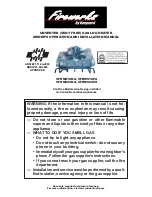
INSTRUCTIONS FOR USING THE ELECTRONIC THERMOSTAT
The electronic control consists in a thermostat which allows for an ambient temperature ranging between 7°C to 30°C.
METHOD OF USE AND OPERATION
The use and operation methods are inserted in the radio control box
HEATING ELEMENT TECHNICAL CHARACTERISTICS
(fig. B)
The thermostat can work exclusively when paired with a specially prepared electric heating element, equipped with safety devices to limit excess
temperature and make the system safe in the event of abnormal factors (see Warnings).
1 - On/Off Button
1
st
pressing: Thermostat ON (Adjustment mode). The 1
st
time the button is pressed, a double audible signal is emitted.
2
nd
pressing: Standby, all the led are switched off; heating is switched off. The 2
nd
time the button is pressed, only one
audible signal is emitted.
2 - Orange led, radio control Reception:
- Normal flashing: reception of RF command (reception of On/Off mode and other settings).
- Slow flashing: paring mode (registration of the radio control code in the thermostat).
- Fast flashing: no connection. If the connection has been interrupted for longer than 60 minutes, the thermostat switches off
(check to see if the problem has been caused by the radio control batteries or by the fact that transmission is out of range, see radio control
instructions).
3 - Two-color led (red/green) display:
a) Red led, heating status:
- Steady: heating is switched on (Adjustment mode)
- Flashing: heating is switched on (Booster mode)
- Off: heating is switched off
b) Green led, Operation modes:
- Steady: Auto/Comfort. (see radio control instructions)
- Slow flashing: Reduced. (see radio control instructions)
- Normal flashing: Anti-freeze. (see radio control instructions)
- Alternating green/red flashing: Thermostat sensor not working.
Paring mode (registration of the radio control code in the thermostat).
In order to pair the RF thermostat with the remote control, select Adjustment mode and then press the On/Off Button for 10 seconds until the
Orange led begins flashing slowly. The thermostat is waiting for connection with the radio control. For more information, see the radio control
instructions. Once pairing has been completed, the thermostat shifts to Adjustment mode.
When restarted after a power failure during operation, the thermostat Orange led will begin flashing fast to indicate the absence of transmission with
the radio control. Operation will be resumed automatically after a few minutes or can be instantly resumed by using the radio control to adjust the
temperature setting or Operation mode as required (see radio control instructions).
INFORMATION FOR USERS
in accordance with article 14 of the Directive 2012/19/UE of 07/07/2012 on waste electrical and electronic equipment.
•
The symbol shown above, present also on the equipment, indicates that it has been placed on the market and that, when the user decides to get
rid of it, it must be disposed of in separate waste collection (including all the components, sub-assemblies and consumer materials which are an
integral part of the product).
•
For information on the systems for collecting these appliances, please contact the company IRSAP SPA or another subject enrolled in the
various National Registers for other countries in the European Union. Waste produced in the home (or of similar origin) may be consigned to
systems for the separate collection of urban waste.
•
When buying a new appliance of an equivalent type, it is possible to hand over the old equipment to the seller. The seller will then contact the
subject in charge of the collection of the equipment.
•
The appropriate separate collection of the scrapped equipment and the subsequent operations of processing, recovery and environment-
compatible disposal, allows the avoidance of potential negative effects on the environment and on human health, while favouring the recycling
and recovery of the component materials.
The unauthorised disposal of the product by the user entails the application of the sanctions contemplated under the national approval of Directives
2011/65/UE, 2008/98/CE and 2015/1127/UE.






























